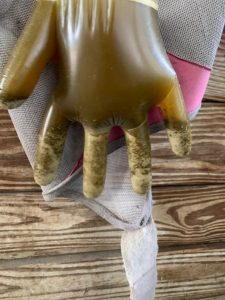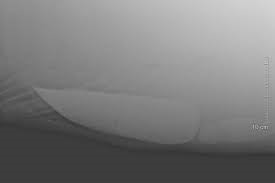Tuesdays with Tony
You know I’m a Florida cat, and what would Florida be without sand? That may have you thinking of a day at the beach with a cool drink in your hand, but my friend, if you’re a horse owner, you had better start thinking of your horse’s intestines as well! Why, you ask, would I ruin your beach daydream? Sand colic! Let’s talk about it now so you can decrease the chance you’ll have to see my docs with a sand colic emergency.
What is sand colic?
Much of Florida’s ground is composed of sand. Horses pick up sand inadvertently as they graze, or as they search for food where there is no grass. When horses run out of grass to eat, or when the grass gets very short, this becomes even more of a problem. Sand can also be consumed if horses are fed on the ground, as they pick up their pellets of grain or stems of hay. If your horse is a messy eater, he may also drop a fair bit of grain onto the sand as he eats, and then scoop up mouthfuls of sand as he tries to pick up every last crumb.
Because sand is heavy, it will sink to the lowest part of the abdomen – that’s usually the horse’s large intestine. As the sand enters the large intestine, it generally settles flat on the bottom, taking the shape of the folds of the colon. Other intestinal contents may pass above the sand, making their way out while the sand just sits there. Sand accumulation can continue without any external signs for months to years. Eventually, it will start to cause problems. The sand will irritate the lining of the intestine, like sandpaper on the delicate tissue. Your horse may have warning signs like chronic diarrhea, weight loss, or subtle mild colic. But even worse, if enough sand is ingested, it will form a partial or complete GI obstruction, blocking the whole intestine. The sand in this case can compact and become as hard as a rock. Food can’t move around the sand impaction and gas builds up, making your horse colic. If the impaction is bad enough, sand colic can be extremely severe and require surgery to correct. Don’t wait for the warning signs of sand accumulation to occur and definitely don’t wait until he is colicky to do something about it!
How do you know if your horse has sand?
If your horse lives in Florida, you can almost guarantee he will have picked up some sand. The question is, how much is in there? There is a rough check my docs do, and you can do at home, called a sand sediment test. It sounds fancy but it’s simple. Putting a few fecal balls into a zip lock bag (my docs use a clear plastic glove) with some water, seal the bag, and mix it up. After a few minutes, check if sand has settled to the bottom of the bag. Interpreting this test is tricky though. If there is a lot of sand in the bag, it’s a pretty good indicator that something needs to be done, but if there’s not a lot, it could still be that your horse has a belly full that’s just not making its way out in the manure. My doc may also listen to the bottom of your horse’s belly with her stethoscope. In some cases, she can hear the sand moving – unsurprisingly, it kind of sounds like the beach. Like the sand sediment test though, it’s not always a crystal-clear answer. If she does hear sand, it’s a good bet your horse needs to be treated for sand accumulation. But in about 80% of cases, that sand can’t be heard, so if she doesn’t hear it, there could still be some there.
If your horse is showing signs that might indicate sand is already irritating the intestines, my doc may recommend an x-ray of your horse’s abdomen. Sand often shows up on an x-ray lining the bottom of the intestines, and if there is a lot, it’s a clear indication that your horse needs to be treated.
How to prevent sand accumulation?
Don’t wait until your horse colics to start thinking about sand. The best thing for your horse (and your wallet) is to prevent the emergency before it happens.
Focus on your pastures. Figure out a way to fertilize, rotate grazing, plant grass seed, irrigate your pastures, or otherwise work on getting some grass to grow! If your horses have long, healthy grass to eat, they are far less likely to pick up sand, because they won’t be grubbing for dead roots in the dirt.
- Feed hay. Hay is one of the best preventatives for sand accumulation. As hay travels through the GI tract, it picks up sand and drags it out in the manure. It’s especially important to feed enough hay if the grass in your pastures is short. The average adult horse should eat 1-2% of their body weight in hay daily. That’s about 10-20 pounds of hay for an average 1000 lb Quarter Horse.
- Feed your horses off the ground. Ideally, hay should be fed in a hanging hay net or hay feeder. Grain should be fed in elevated feed buckets with mats underneath for the crumbs that are dropped. This simple step can drastically decrease the amount of sand your horse ingests every day. You can also bring your horses into stalls for their grain meals.
- Give your horses SandClear daily for one week every month. If you know your property is sandy, or you don’t have the best pasture situation around, this is a great idea. SandClear is a pelleted form of psyllium that is designed as a feed-through. While it won’t fix a complete sand obstruction, it can help to carry small amounts of sand out of the intestine so it doesn’t build up and turn into a bigger problem.
Getting rid of sand
If your horse has consumed enough sand, he may show signs of colic, weight loss, diarrhea, or fever. You’ll definitely need to get my doc involved at this point. She may pass a tube into his stomach and give him psyllium, magnesium sulfate, or mineral oil to help drag the sand out of the intestine and lubricate the lining of the gut to protect it. More severe cases may require hospitalization and IV fluids. A heavy sand accumulation can be life threatening and may require surgery under general anesthesia to correct.
Do yourself a favor, and don’t let it get to this stage. Horses may throw a lot of surprises at you, but at least this is something you can prepare for. If you live in Florida, work on your pastures and your feeding plan to avoid a sand problem as much as possible. Talk to my docs if you want more specific advice. Then relax, make yourself an umbrella drink, and enjoy Florida life! As for me, there’s a nice sandy spot in the Springhill parking lot where I will be surveying my domain.
Until next week,
Tony
P.S. Are you looking for more information on colics and other common, and some not so common horse issues? Take a listen to Dr. Lacher & Justin talking about colics and so much more on their podcast..Straight From the Horse Doctors Mouth!
Tuesdays with Tony is the official blog of Tony the Clinic Cat at Springhill Equine Veterinary Clinic in Newberry, Florida. If you liked this blog, please subscribe below, and share it with your friends on social media! For more information, please call us at (352) 472-1620, visit our website at SpringhillEquine.com, or follow us on Facebook!
[jetpack_subscription_form title="Subscribe to Whinny's Wisdoms"]



